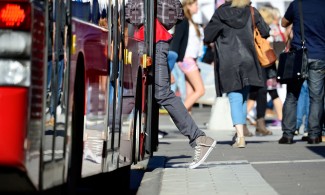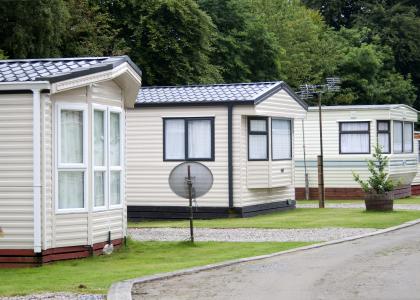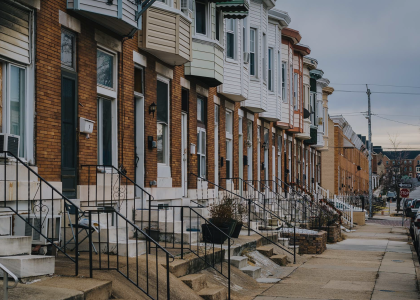This blog post is the second in a series taking a closer look at the findings of the 2021 City Clean Energy Scorecard. An earlier post looked at cities’ progress on energy equity.
Few cities have adequately enabled the use of efficient, low-carbon modes of transportation, according to recent data from the National Renewable Energy Laboratory (NREL). That’s a problem when transportation now accounts for 29% of greenhouse gas emissions in the United States, more than any other sector. While electric vehicles will be a key tool for reducing those emissions, shifting to more-efficient modes of transportation such as public transit, biking, and walking, will be equally critical—and the new data show how far we have to go in providing access to affordable, clean, and efficient alternatives to driving.
The NREL data was published for the first time in ACEEE’s recent City Clean Energy Scorecard. It’s derived from the lab’s new Mobility Energy Productivity (MEP) metric, which assesses the overall ability of a city’s transportation system to connect people to services and activities in an energy-efficient, convenient, and cost-effective way. A city’s overall MEP score is based on population-weighted averages of scores computed for locations across a city, each based on a range of variables related to these goals.
The MEP score also displays the relative contributions of various individual transportation modes to overall mobility. Looking at what portion of each city’s overall MEP score came specifically from its MEP score for efficient modes (i.e., walking, biking, and public transit) allowed us to compare the state of efficient mobility consistently across cities. (We did so instead of comparing cities’ overall MEP scores, which scale to the population and geographic extent of a city, leading more populous and larger cities to generally have higher overall scores).
All cities have room to improve
Of the 100 cities assessed in the City Scorecard, NREL has MEP data for 99. Efficient-mode scores made up at most 36% of a city’s total MEP score (Reno, Nevada), and as little as 6% (Springfield, Massachusetts). The mean was 17%. The more efficient-mode scores contribute to a city’s overall MEP, the more efficient the transportation system.
View visualization full screen »
Cities with large MEP contributions from non-driving modes correlated with those that scored well on transportation policies and outcomes in the City Scorecard. Of the 10 highest-scoring cities in the Scorecard’s transportation chapter, 7 earned at least 20% of their total MEP score through the contributions of efficient modes. Of these 10, Oakland and San Francisco tied for the highest MEP efficient-mode contribution at 28%, while Atlanta had the lowest at 9%. The mean efficient-mode contribution among the group was 19%. Even the best-performing cities have room for significant improvement when it comes to increasing the overall efficiency of public transit, walking, and biking, and supporting the use of these modes as travel options.
Cities have policies available to improve efficient mobility
To meet ambitious climate goals and create livable, equitable communities, cities will need to ensure that residents have access to a wide array of transportation options and that the built environment supports car-free travel. To make the transition to efficient, low-carbon transportation systems, decision makers can use several policy levers scored in the City Clean Energy Scorecard, which showcases leading examples:
Smart land use and housing policies
Reshaping land use policies can help ensure that cities don’t just favor driving. Zoning codes that place a priority on dense, mixed-use, and transit-oriented development make key services accessible to all, while policies that require or incentivize the construction of low-income housing near transit help keep the most transit-dependent communities connected.
In Baltimore, for example, a citywide code that encourages the development of mixed-use neighborhoods is exemplary of the type of policy that earns high scores in the transportation section of the Scorecard. In Washington, DC, the housing code mandates that all District land dispositions located near transit carry a 30% affordable housing requirement.
Of the 100 cities scored in the 2021 Scorecard, only 26 earned full credit for location-efficient zoning codes, and only 3 scored full marks for their policies advancing low-income housing around transit. Of the top-scoring cities this year, only Miami and Washington, DC, scored full points in both metrics. Interestingly, neither had particularly high MEP efficient-mode score contributions, so there appears to be a need to supplement what cities are already doing concerning location efficiency with new policy actions and ideas.
Mode shift targets
ACEEE awards points to cities in the Scorecard that set specific goals for shifting trips to efficient transportation modes. Establishing modal share goals can help a city identify weak spots within its transportation network and better plan for future transportation-related projects that will in turn help them meet their modal targets. Perhaps most importantly, goals help a city measure progress toward a target.
Minneapolis’s goal of converting 60% of all trips to non-car modes (at least 35% walking or biking and 25% by transit) by 2035, using a 2019 baseline, is an excellent example of a goal that is both comprehensive in scope and aggressive. Twenty cities earned full credit for their modal share targets in 2021, down from 21 cities in 2020. With only one-fifth of cities scoring full credit for this metric, this is an area of much needed improvement moving forward.
Investments in public transit
Although the majority of transit funding comes from federal and state sources, cities can supplement this funding through creative mechanisms. A city’s efforts to financially support its transit system exemplify a commitment to low-carbon transportation and equitable transportation outcomes. Public transit is the most efficient mode of mass transport in most cities, so properly funding such networks ensures that a broad community of people have reliable, safe, and relatively efficient transportation. New York City, Oakland, San Francisco, and Seattle were the only cities to earn full credit, and 42 of the 100 cities assessed failed to score any points for transit funding in the 2021 Scorecard. The top 4 scorers for transit funding also had an exceptionally high mean MEP efficient-mode ratio of 25%.
Enabling more efficient mobility
Each of these policies can go a long way toward increasing the connectivity of American cities. While tools such as the MEP don’t prescribe specific changes, they can help highlight areas of need and help policymakers create transportation policies that respond to existing travel trends and gaps within cities’ existing transportation systems.




